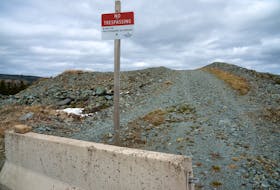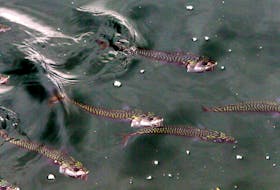
Many people stroll into the forest without an inkling of the diverse ways the plants and trees that surround them can be used.
When Kevin Barnes walks into the great outdoors, he sees all sorts of possibilities for plants and trees to be used as food or medicinal purposes.
Wednesday morning, the western regional vice-chief of the Qalipu Mi’kmaq First Nation Band led a guided walk for about a dozen participants interested in learning some of his knowledge of local edible plants.
The workshop is old hat for Barnes, who also does similar interpretive walks for Parks Canada in Gros Morne National Park and for local schools.
Wednesday’s guided walk along the Blow-Me-Down Brook Nature Trail on the southern shore of the Bay of Islands was in conjunction with the Qalipu Mi’kmaq First Nation Band, the Western Environment Centre and the Food Security Network of Newfoundland and Labrador. The workshop was the third in a series of eight sustainable food skills workshops.
Participants learned all about how plants such as dandelion, colt’s foot and Labrador tea can be picked and turned into soothing, vitamin-rich cups of tea, wines and other foods.
Boiling dandelion flowers, for instance, and letting the nectar cool and settle to the bottom of the water can yield a rich, sugary syrup that can be used as a sweetener.
They also discovered that the bluish berries found on ground juniper, or berries found on tamarack, can be crushed and used as a substitute for a barbecue seasoning.
Those same juniper berries can be a main ingredient in making gin. Pregnant women may want to stay away from them, though, since they can induce labour pain.
Barnes showed the hikers that some vegetation can be used for medicinal purposes.
For instance, the gum inside blisters found on balsam fir trees can be used, along with some birch rind, to seal a cut and promote healing if someone is in need of a little first aid in the outdoors.
“The aboriginals would use alder plants for dye for their hides,” added Barnes.
“You can also take the inside of the bark and scrape it and chew it. It’s really good for relieving headaches and other pains.”
A diabetic out in the woods who experiences low blood sugars may want to chew on the inside bark of some yellow birch to get some much-needed sugars.
Then there is the creeping snowberry plant. That plant’s leaves taste like spearmint and are a great, natural way to freshen up one’s breath by chewing on them. It also makes a nice cup of mint tea.
“These plants are loaded with vitamins too,” noted Barnes.
The walk into the swimming hole along Blow-Me-Down Brook included a boil-up featuring a lunch of Labrador tea to wash down some bannock — a simple flatbread traditionally eaten by aboriginal cultures — smothered in jams made from local berries.
As he always does during his guided treks, Barnes never let the opportunity pass by to remind participants about the importance of respecting the environment.
“We talked about the protection of all these species,” he said.
“You don’t eat too much or take too much. You take what you need and you leave the rest.”








